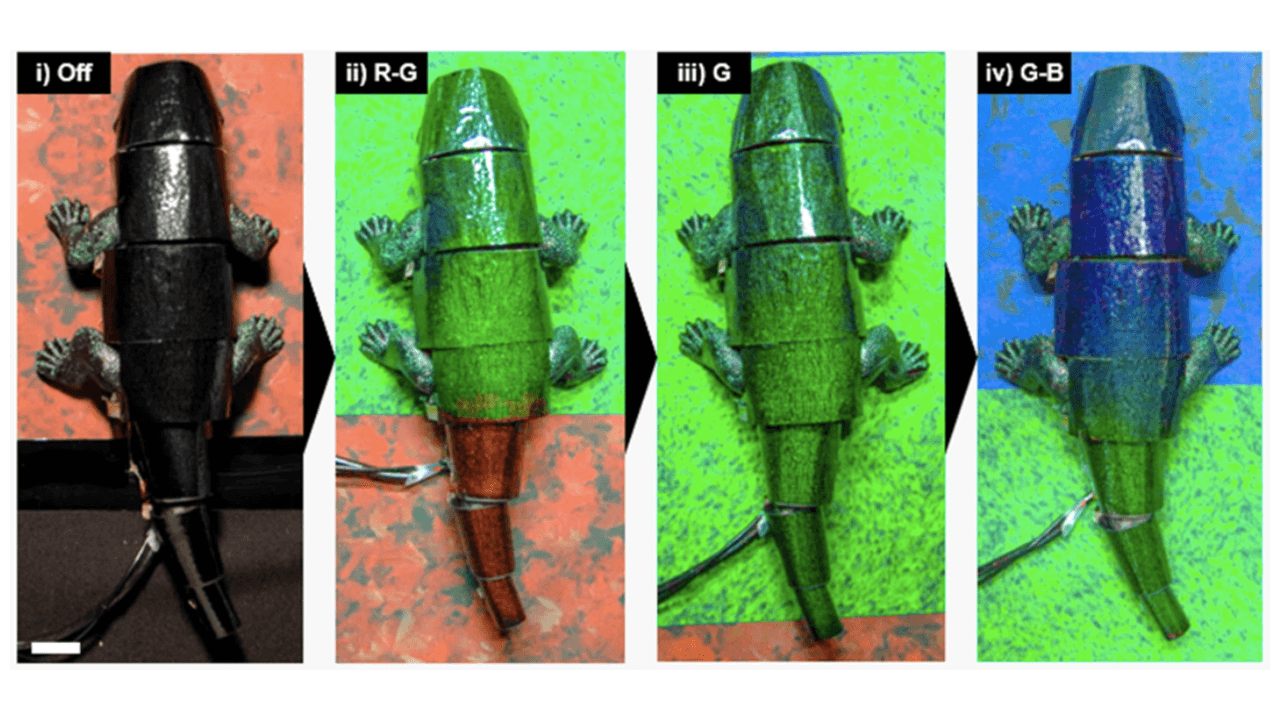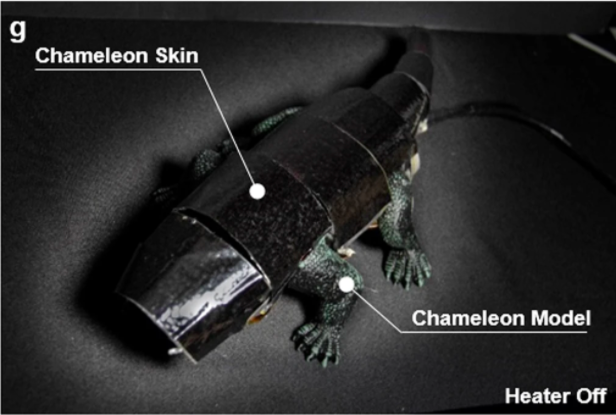SUMMARY
This is AI generated summarization, which may have errors. For context, always refer to the full article.

South Korean researchers say they have developed an artificial skin-like material, inspired by natural biology, that can quickly adjust its hues like a chameleon to match its surroundings.
The team, led by Ko Seung-hwan, a mechanical engineering professor at Seoul National University, created the “skin” with a special ink that changes color based on temperature and is controlled by tiny, flexible heaters.
“If you wear woodland camouflage uniforms in desert, you can be easily exposed,” Ko told Reuters. “Changing colors and patterns actively in accordance with surroundings is key to the camouflage technology that we created.”
Ko and the team demonstrated the technology – thermochromic liquid crystal (TLC) ink and vertically stacked multilayer silver nanowire heaters – using a robot with color-detecting sensors. Whatever colors the sensors “saw” around it, the skin tried to mimic.
In a video, the robot crawled over red, blue and green floors, instantly changing color to match the background.


“The color information detected by sensors is transferred to a microprocessor and then to silver nanowire heaters. Once the heaters reach a certain temperature, the thermochromic liquid crystal layer changes its color,” Ko said.
The total thickness of the flexible, multi-layered artificial skin is less than a hundred micrometers – thinner than a human hair. By adding additional silver nanowire layers in simple shapes such as dots, lines or squares, the skin can create complex patterns.
“The flexible skin can be developed as a wearable device and used for fashion, military camouflage uniforms, exterior of cars and buildings for aesthetic purposes, and for future display technology,” Ko said.
The research was published in the journal Nature Communications in August. – Rappler.com
Add a comment
How does this make you feel?





There are no comments yet. Add your comment to start the conversation.